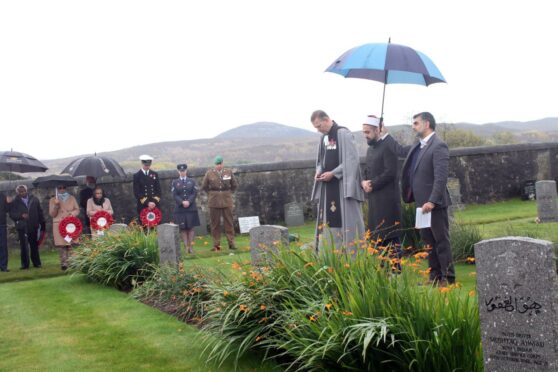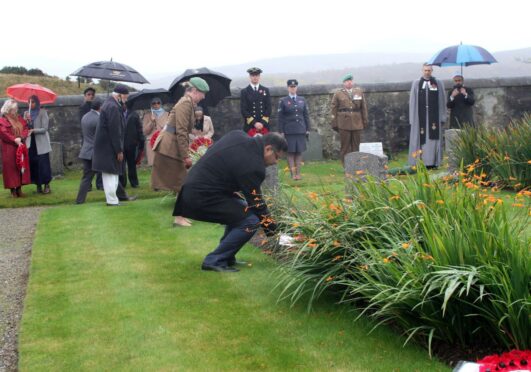A multi-faith service has been held in a Highland cemetery to pay tribute to south Asian soldiers who fought alongside British troops in both world wars.
The ceremony at Kingussie focused on the soldiers of Force K6 of the British Indo Pak Army, from present-day Pakistan, who died in Scotland after being evacuated from Dunkirk.
Nine soldiers from the force are buried at the cemetery, with four others buried at three sites across Scotland.
The Kingussie service was attended by representatives of the British Armed Forces, members of the charity Colourful Heritage, Pakistan Consul General Syed Zahid Raza, members of the Glasgow South Asian community including Sikhs, Hindus and Muslims, and local Highland councillors.
Local resident Isobel Harding, who is in her late nineties, has tended for the graves since the 1940s and received the British Empire Medal for her efforts last year.
While she was unable to attend the ceremony, members of her family were present.
Colourful Heritage has organised annual remembrance events at Kingussie since 2018.
Charity founder Omar Shaikh said: “Hindus, Muslims, Sikhs, Christians and Gurkhas from the British Indo Pak Army fought alongside British troops in the world wars, and more than 160,000 soldiers sadly lost their lives.
“They travelled halfway around the world to fight alongside our forces, but the reality is that not enough people know this story.
“We want people to learn about the sacrifices that were made and reflect on the commonality of our humanity.
“Scotland has a special connection through Force K6, and this was a moment to commemorate those who fought for us and lost their lives.”
The charity is also campaigning for a permanent memorial to the British Indo Pak Army soldiers in Glasgow.
Who were Force K6?
In December 1939, after an urgent call was made to the Indian empire for animal troop companied to come to France, mule transport corps Force K6 of the British Indo Pak Army arrived in Marseilles.
The following year, the bulk of the young soldiers were evacuated out of Dunkirk and transported to Britain, where they initially stayed in the Welsh Brecon Beacons.
However, they soon moved up to Scotland and began training in the country’s cold mountainous regions.
Sadly, many of the soldiers died while out on these exercises.
The 13 soldiers buried in four cemeteries around Scotland are primarily from the Punjab region and Khyber Pakhtunkhwa (previously known as NWFP) in modern Pakistan.
Two weeks ago, Veterans Secretary Keith Brown and Colourful Heritage founder Mr Shaikh visited several parts of the Highlands where Force K6 had been stationed, and the politician backed the charity’s campaign to find the families of the servicemen.

